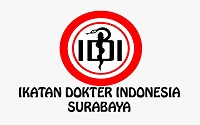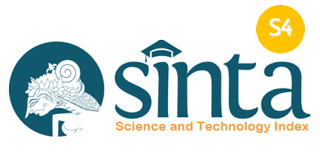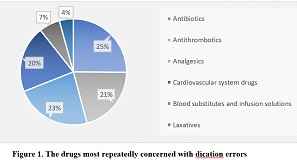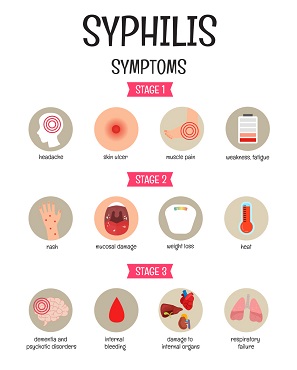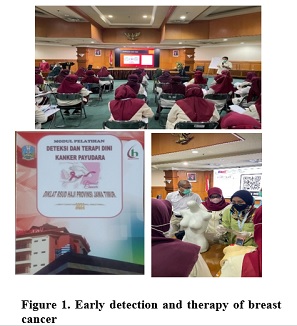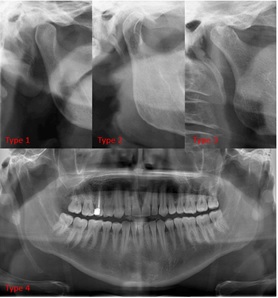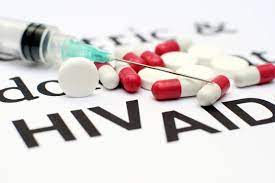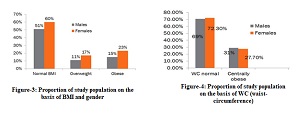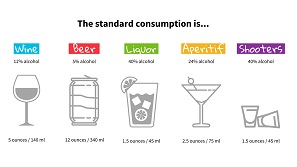The Relationship Between Central Obesity and The Incidence of Hypertension in Women of Productive Age in Turirejo Hamlet, Lawang, Malang, Indonesia

Inactivity and sedentary lifestyles, particularly among women who primarily fulfill the role of housewives, are associated with a higher risk of obesity. The 2018 Indonesian Basic Health Research identified a significant prevalence of hypertension among adults aged 55-64, with a disproportionate burden on women. This study aimed to investigate the correlation between obesity and hypertension in women of productive age. This research used descriptive analytics with a cross-sectional design. Data were collected by interviews, blood pressure measurements, and central obesity measurements. The data were collected from Public Health Training Center Murnajati Lawang, Malang, Indonesia. The majority of participants belonged to the 46-55 age group and were non-working individuals. Among the total sample of 50 respondents, 19 (38%) experienced hypertension, with only 3 (6%) exhibiting central obesity. Dietary habits among respondents with central obesity included light to moderate consumption of items such as butter (52%), offal (34%), egg yolks (54%), shrimp (36%), cream milk (54%), mayonnaise (40%), and fatty meats (52%). However, the Fisher test results did not indicate a significant relationship (p= 0.279) between central obesity and hypertension. In conclusion, this study found no evidence of a direct association between central obesity and the incidence of hypertension in women of reproductive age.
INTRODUCTION
Hypertension is a condition characterized by excessive blood pressure and normal limits. According to the World Health Organization11, there has been a drastic increase in hypertension sufferers, from 650,000 sufferers to 1.28 billion in just the last 30 years.
Hypertension is still a big problem in Indonesia, 25.8% of the population aged ≥18 years suffer from hypertension. The 2018 Indonesian Basic Health Research showed the prevalence of hypertension in the population aged over 18 years as follows: hypertension in the age group 31-44 years was 31.6%, age 45-54 years was 45.3%, and age 55-64 years was 55.2%. The prevalence of hypertension in women was 36.85% higher than in men 31.34%22.
One of the factors causing hypertension is obesity. The World Health Organization defines central obesity as "abnormal or excessive accumulation of fat in the abdominal cavity which can affect health if the abdominal circumference for women is more than 80 cm". Abdominal circumference is an indicator for measuring central obesity. Hypertension increases the risk of cardiovascular disease and can cause problems with the brain, kidneys, and multiple other organs. Obesity is associated with various diseases such as hypertension, hyperlipidemia and hyperglycemia, type 2 diabetes, dyslipidemia, and cardiovascular disease11. Sedentary lifestyles and inactivity are linked to an increased risk of obesity, especially in women who primarily take on the role of housewife.
This study aimed to find the relationship between obesity and hypertension in productive-age women in Turirejo Village, Lawang, Malang, Indonesia.
MATERIALS AND METHODS
This research used descriptive analytics with a cross-sectional design. Data collection was carried out through interviews. The independent variables in this study were the incidence of central obesity, physical activity, and eating patterns, and the dependent variable in this study was the incidence of hypertension in women of reproductive age.
The sample size was calculated by using the test formula33. Data were collected on November 2, 2022, by young medical students of Universitas Airlangga, Surabaya, Indonesia who were stationed at Health Training Center Murnajati Lawang, Malang, Indonesia with guidance from Universitas Airlangga academic supervisors and “Latkemas” field supervisor who had received official permission. By using the Lemesow formula, the sample size required was 50 samples. Sampling was carried out using the proportional random sampling method.
Blood pressure measurements were carried out using sphygmomanometers, and the respondents diagnosed hypertension if the systolic and diastolic pressure was >140/90. Obesity was measured by abdominal circumference. According to WHO criteria recommendations, women are said to be obese if their abdominal circumference is ≥ 80 cm, and not obese if their abdominal circumference is < 80 cm.
The physical activity variables in this study were divided into light (MET <600), moderate (≤600-3000), and severe (≥3000). The Global Physical Activity Questionnaire (GPAQ) WHO 2012 measured physical activity according to WHO criteria.
The tool for collecting dietary pattern data was a questionnaire, asking about the consumption of salt, MSG, butter, salted fish, instant food, offal, egg yolks, shrimp, milk cream, mayonnaise, and fatty meat.
Statistical analysis was using the Fisher exact test. The collected data were coded, followed by cleaning and entering data using statistical data processing software (SPSS). The research protocol had been approved by the Health Research Ethics Committee, Faculty of Medicine, Universitas Airlangga (Approval number: 51/EC/KEPK /FKUA/2023).
RESULTS
Table 1 shows distribution of age group among the respondents. Those aged 46-55 years has the highest proportion with 15.7% and the distribution of respondents’ education levels is mostly Senior High School (SMA) with a percentage of 48.0%. According to the characteristics of respondents’ employment status, the majority of the respondents were not working (68.0%). Table 2 shows the frequency distribution of hypertension found in 50 total samples of research respondents. Most of the research respondents were classified as hypertensive with central obesity.
Characteristics | Number | Percentage (%) |
| Age | ||
| 17 – 25 years | 2 | 4 |
| 26 – 35 years | 6 | 12 |
| 36 – 45 years | 13 | 26 |
| 46 – 55 years | 20 | 40 |
| 56 – 65 years | 9 | 18 |
Education | ||
Elementary School | 9 | 18 |
Junior High School | 4 | 8 |
Senior High School | 24 | 48 |
Vocational School | 9 | 18 |
Bachelor degree graduate | 4 | 8 |
| Work Status | ||
| Does not Work | 34 | 68 |
| Work | 16 | 32 |
| Total | 50 | 100 |
Table 3 presents data indicating prevalent consumption patterns among respondents with hypertension and central obesity. It can be seen that, 52% of respondents with hypertension reported consuming high-sodium foods like salt and instant meals, while 36% reported consuming high-fat foods, including egg yolks. Similarly, 82% of respondents with central obesity reported consuming high-sodium foods, while 54% of those suffering from obesity reported consuming high-fat foods like egg yolks.
Table 4 shows that light activity was found in respondents with central obesity (58%) and in respondents with hypertension (40%). Table 5 shows that Fisher’s test results obtained p= 0.279, which shows that the incidence of hypertension and central obesity has no significant correlation.
Number | Percentage (%) | |
Hypertension | ||
Positive | 19 | 38 |
Negative | 31 | 62 |
Central Obesity | ||
Positive | 3 | 6 |
Negative | 47 | 94 |
Consumption | Hypertension | Central Obesity | ||
Positive | Negative | Positive | Negative | |
Salt | ||||
Light consumption | 26(52%) | 18(36%) | 41(82%) | 3 (6%) |
Moderate consumption | 1(2%) | 1 (2%) | 2 (4%) | 0 (0%) |
No consumption | 4(8%) | 0 (0%) | 4 (8%) | 0 (0%) |
MSG Flavoring | ||||
Light consumption | 17(34%) | 12(24%) | 27(54%) | 2 (4%) |
Rare consumption | ||||
World Health Organization. 2021. Hypertension. [online] Who.int. Available at: https://www.who.int/news-room/fact-sheets/detail/hypertension
Kementerian Kesehatan Republik Indonesia (2018b). Laporan Nasional RISKESDAS 2018. Kementerian Kesehatan Republik Indonesia.
Lemeshow et al., (1991).Sample size determination in health studies. A Practical Manual. 1991. WHO. Geneva.
Malinti, E., & Elon, Y. (2019). Hubungan asupan natrium, kalium; indeks masa tubuh, lingkar pinggang dengan tekanan darah pria dewasa muda. Riset Informasi Kesehatan, 8(1), 1. https://doi.org/10.30644/rik.v8i1.213
Rusdi, & Isnawati, N. (2009). Awas Anda Bisa Mati Cepat Akibat Hipertensi dan Diabetes. Power Books.
Kementerian Pemberdayaan Perempuan dan Perlindungan Anak (2019). Profil Perempuan Indonesia 2019. Kementerian Pemberdayaan Perempuan dan Perlindungan Anak.
Centers for Disease Control and Prevention (2020). High Blood Pressure (Hypertension) Risk Factors. [online] Centers for Disease Control and Prevention. Available at: https://www.cdc.gov/bloodpressure/risk_factors.htm.
Ungvari, Z., Tarantini, S., Donato, A.J., Galvan, V. and Csiszar, A. (2018). Mechanisms of Vascular Aging. Circulation Research, 123(7), pp.849–867. doi:10.1161/circresaha.118.311378.
Pramana L. (2016). Skripsi Faktor-Faktor Yang Berhubungan Dengan Tingkat Hipertensi Di Wilayah Kerja Puskesmas Demak II Universitas Muhammadiyah Semarang.
Budi Mulia, E. P., Fauzia, K. A., & Atika, A. (2021). Abdominal Obesity is Associated with Physical Activity Index in Indonesian Middle-Aged Adult Rural Population: A Cross-Sectional Study. Indian journal of community medicine : official publication of Indian Association of Preventive & Social Medicine, 46(2), 317–320. https://doi.org/10.4103/ijcm.IJCM_947_20
Rêgo ML, Cabral DA, Costa EC, Fontes EB. Physical Exercise for Individuals with Hypertension: It Is Time to Emphasize its Benefits on the Brain and Cognition. Clinical Medicine Insights: Cardiology. 2019;13. doi:10.1177/1179546819839411
Samuel, Barbara, Lean, Stephen, Matthew, Alice. Dietary recommendations for children and adolescents: a guide for practitioners: consensus statement from the American Heart Association. Circulation journal of the american Heart Association. 2005;112:2061-75.
Burhan FZ, Sirajuddin S, Indriasari R. Pola Konsumsi Terhadap Kejadian Obesitas Sentral Pada Pegawai Pemerintahan Di Kantor Bupati Kabupaten Jeneponto. Makassar: Universitas Hasanuddin Makassar; 2013.
Bell K., Twiggs J. 2015. 'Hypertension: The Silent Killer: Updated JNC-8 Guideline Recommendations'. Alabama Pharm Assoc;1–8.
Grillo, A., Salvi, L., Coruzzi, P., Salvi, P. and Parati, G. (2019). Sodium Intake and Hypertension. Nutrients, [online] 11(9), p.1970. doi:10.3390/nu11091970
Taylor, L.E., Gillis, E.E., Musall, J.B., Baban, B. and Sullivan, J.C. (2018). High-fat diet-induced hypertension is associated with a proinflammatory T cell profile in male and female Dahl salt-sensitive rats. American Journal of Physiology. Heart and Circulatory Physiology, [online] 315(6), pp.H1713–H1723. doi:10.1152/ajpheart.00389.2018.
Istiana, Dian, et al. 2022. The Relationship between Physical Activity and the Incidence of Hypertension at the Work Area of the Ampenan Health Center. Strada : Jurnal Ilmiah Kesehatan; https://10.30994/sjik.v11i1.884
Iqbal AM, Jamal SF. Essential Hypertension. [Updated 2022 Jul 4]. In: StatPearls [Internet]. Treasure Island (FL): StatPearls Publishing; 2022 Jan-. Available from: https://www.ncbi.nlm.nih.gov/books/NBK539859/
Lutfiana. Asupan tinggi natrium dan berat badan lahir sebagai faktor risiko kejadian hipertensi obesitas pada remaja awal. Journal of Nutrition College. 2012;2(2):127-133
Nagao, T., Nogawa, K., Sakata, K., Morimoto, H., Morita, K., Watanabe, Y. and Suwazono, Y. (2021). Effects of Alcohol Consumption and Smoking on the Onset of Hypertension in a Long-Term Longitudinal Study in a Male Workers’ Cohort. International Journal of Environmental Research and Public Health, 18(22), p.11781. doi:10.3390/ijerph182211781.
Western Uganda: A Population Based Cross Sectional Survey. International Journal of Hypertension, 2018, pp.1–8. doi:10.1155/2018/8253948.
World Health Organization. 2021. Hypertension. [online] Who.int. Available at: https://www.who.int/news-room/fact-sheets/detail/hypertension
Copyright (c) 2024 dwiaprilawati

This work is licensed under a Creative Commons Attribution-ShareAlike 4.0 International License.
- The journal allows the author to hold the copyright of the article without restrictions.
- The journal allows the author(s) to retain publishing rights without restrictions.
- The legal formal aspect of journal publication accessibility refers to Creative Commons Attribution Share-Alike (CC BY-SA).
- The Creative Commons Attribution Share-Alike (CC BY-SA) license allows re-distribution and re-use of a licensed work on the conditions that the creator is appropriately credited and that any derivative work is made available under "the same, similar or a compatible license”. Other than the conditions mentioned above, the editorial board is not responsible for copyright violation.






